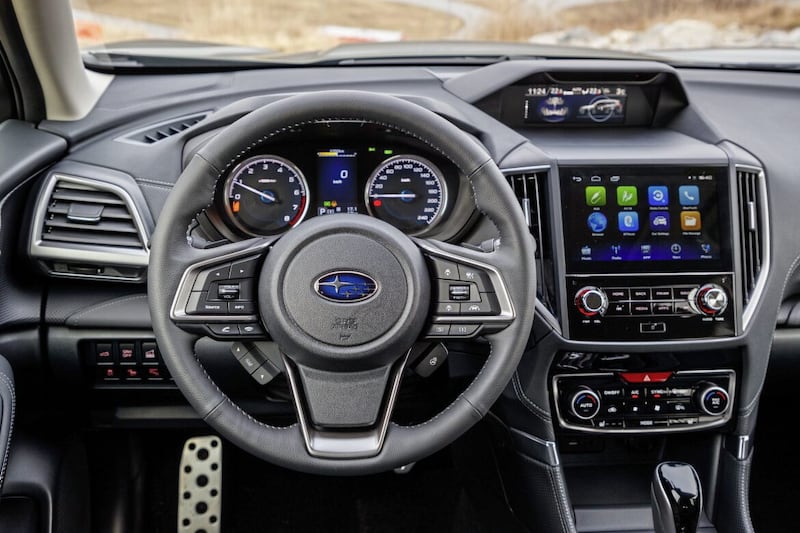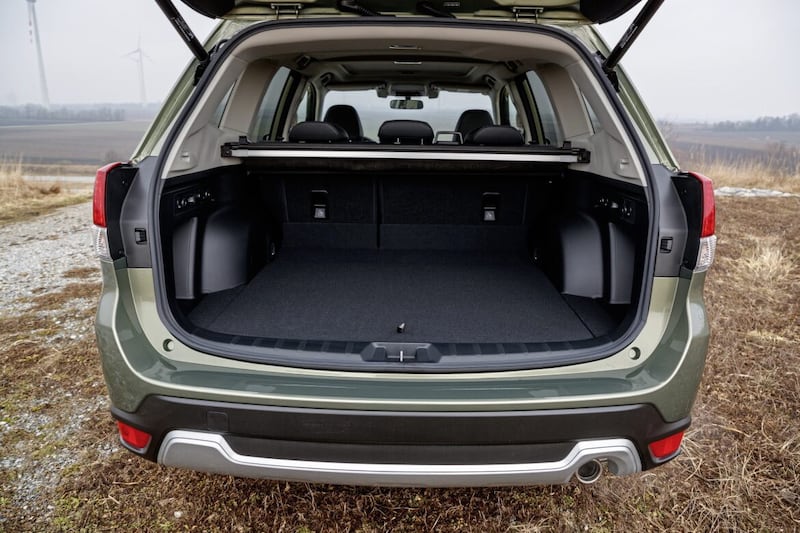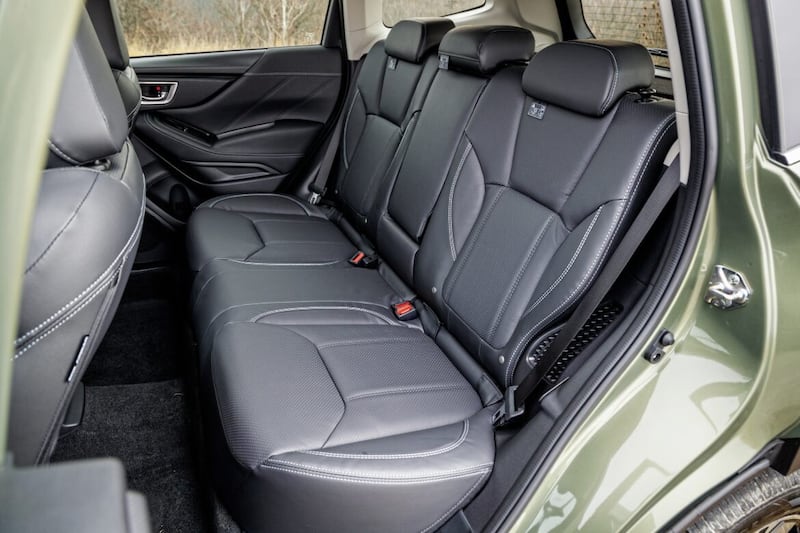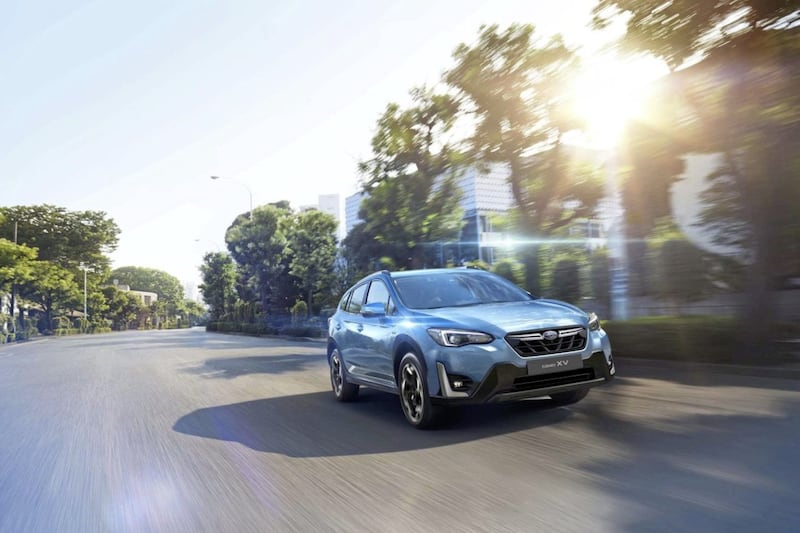WHEN Subaru starting selling the Forester a quarter of a century ago, there wasn't much else like it, writes William Scholes.
It really had only two rivals, the Toyota RAV4 and Honda CRV. Together, they formed a trio of trailblazers from Japan which opened eyes to the idea of a 'crossover' - namely a family car that was a cross between a hatchback, estate and 4x4.
Another Japanese marque, Nissan, came along later with the Qashqai, its take on the concept, which supercharged crossover sales and spawned a legion of imitators. Today, we tend to describe family cars of this type as 'SUVs' (almost no-one ever calls them 'sport utility vehicles', however).
Anyway, that original triumvirate has evolved over the years, thriving - North America loves them - and growing larger along the way.
The Subaru has always been the more idiosyncratic car. The first few generations of Forester were surprisingly effective performance cars - with the right engine, they were essentially an Impreza WRX or STI with a bigger body and all of that car's turbocharged rocketship performance and four-wheel-drive grip. A rally car for the school run and trips to the tip, if you will.

But of late the Forester has become more sedate and sensible. There was an interesting diesel engine for a while, but that's gone now.
Today, the only engine you can get is a petrol hybrid. It's a 2.0-litre four-cylinder unit in Subaru's trademark boxer configuration (picture the engine laid flat, rather than upright as in most other cars, with a pair of pistons opposite each other, 'punching' at each other).
It's an inherently smooth layout and allows the engine to be mounted low in the chassis. This keeps the centre of gravity relatively low and contributes to making the car feel both more stable and, when required, more agile.
Another Subaru calling card is the company's persistence with a permanent symmetrical all-wheel-drive system. Almost every other crossover which offers four-wheel-drive will use a part-time system, controlled by electronics. Generally speaking, whenever wheelspin is detected, computer will fire torque from the front axle to the back. But in Subaru's case, the wheels are mechanically 'connected' at all times.
This is a very pure layout in engineering terms. The only other manufacturer which has kept faith with the boxer engine with the same doggedness is Porsche; it's not too big a leap to think of a Forester as a four-wheel-drive Porsche 911 in reverse.

There's a downside to maintaining this purity - running four-wheel-drive all the time is not terribly efficient, nor are boxer engines famed for their frugality. You'll pay at the petrol pump, in other words.
Subaru has attempted to mitigate the fuel economy and CO2 emissions by hybridising the boxer engine, dubbing it the 'e-Boxer'.
The 2.0-litre engine conjures up a fairly pedestrian 148bhp and is combined with a small electric motor that produces 16bhp. You're looking at 143lb ft of torque here - none of these are figures that are going to rearrange your hairstyle if you stamp on the throttle.
There's a small lithium ion battery connected to the electric motor (the hybrid gubbins lives under the boot floor). And it must indeed be small because, unlike every just about other hybrid you can buy today, the Forester can go almost no distance on electric power alone. It feels like the top of the driveway is about the height of it - which is disappointing.

Better to think of the Forester's hybrid set-up as being there to help smooth out the engine's power delivery and quicken its responses. It certainly doesn't help to make the Forester particularly economical - I scraped about 32mpg, which counts as disappointing.
Anyone with fond memories of the pleasing and very mechanical-feeling manual gearboxes you used to get in Subarus will also find the decision to offer the Forester exclusively with a CVT automatic gearbox a let-down.
It's by no means the worst application of a CVT, and you can use steering wheel paddles to put it into 'ratios', but even delicate use of the throttle sees engine revs soar and whine.
All of this conspires to make the Forester a slow car. It'll take 12 seconds to go from 0-60mph. Even the Honda Jazz we had on these pages a few weeks ago does it in less than 10 seconds.
Prices start at just under £38k for XE trim, rising to a fiver under £40k for a Sport model and £40,895 for Premium, which gets goodies like leather upholstery and heated back seats.

This, then, is not really a cheap car. You could take your £40k and get yourself one of the very nice new Kia Sportages, which would have a more useful hybrid system, more toys, better performance and be cheaper to run. Or an example of one of its perennial rivals, the RAV4 or CRV.
And maybe you should. Because on paper at least, the Forester doesn't make a lot of sense.
But... I am deeply reluctant to leave it at that. The big Subaru, for all its flaws, is a deeply likeable car. It really gets under your skin.
Sure, it's not quick, but it is comfortable and relaxing. It's lovely to drive, too, with smooth and predictable responses. Large windows give a great view out. There's buckets of space for passengers and all your luggage.

This is a car designed to be used, to have life flung at it. For example, those roof bars aren't for show - the door sills double as steps to help you lift things up there. Few cars at any price feel as well built as a Subaru.
And where wannabe rivals mostly offer fairly puny part-time four-wheel-drive capability, the Forester is The Real Deal. Take it off road - up muddy farm lanes, across the fields - and the same qualities that make it stable and reassuring on the highway are merely amplified.
You'll get further and with less drama than you will in a CRV, RAV4, Sportage or any of the myriad other family-friendly SUVs. A Land Rover Discovery Sport would rival it, but that doesn't share the Forester's sense of unburstable robustness.
The sheer strength of the Subaru is tangible. If you are going to have a crash, a Forester is one of the best cars to have it in (of all the cars tested by Euro NCAP up to 2020/21, the related Subaru Outback posted the highest overall score...).

Subaru's driver assist system is called EyeSight and uses a pair of forward-facing colour cameras, positioned behind the windscreen at the rear-view mirror, to monitor the road ahead. It controls safety features such as autonomous emergency braking, adaptive cruise control and a panoply of other functions.
The Forester is undeniably a niche car. Few vehicles feel as thoroughly engineered, even if that means Subaru has in the process baked-in some negatives, such as the underwhelming fuel economy.
It might look like it swims in the same waters as the Honda CRV and Toyota RAV4, as well as the Ford Kuga, Kia Sportage, Nissan Qashqai and all the rest of those cars who are heirs of the original crossover template, but really the Forester is its own thing, a car you choose deliberately for its considerable virtues because you are prepared to overlook its vices.
Subaru, like the rest of the industry, is heading for an electric future. It's first EV, the £50k Solterra is almost upon us. It's a joint venture with Toyota (they already build the BRZ and Toyota GR86 sports cars together) and it seems inevitable that Subaru's individualism will be diluted.
But before that happens, we should celebrate the Subaru Forester for its honesty and integrity and the singlemindedness of its engineering. Logic says its maker should have compromised long ago and ditched the expensive boxer engine and all-wheel-drive system for something cheaper, like everyone else. But then it wouldn't have been a Subaru.
That unwillingness to compromise is probably at the heart of the Forester's appeal. It's not built the most efficient way or the cheapest way or in a way that's going to appeal to a broad set of buyers... but the important thing is that it's built the Subaru way.







